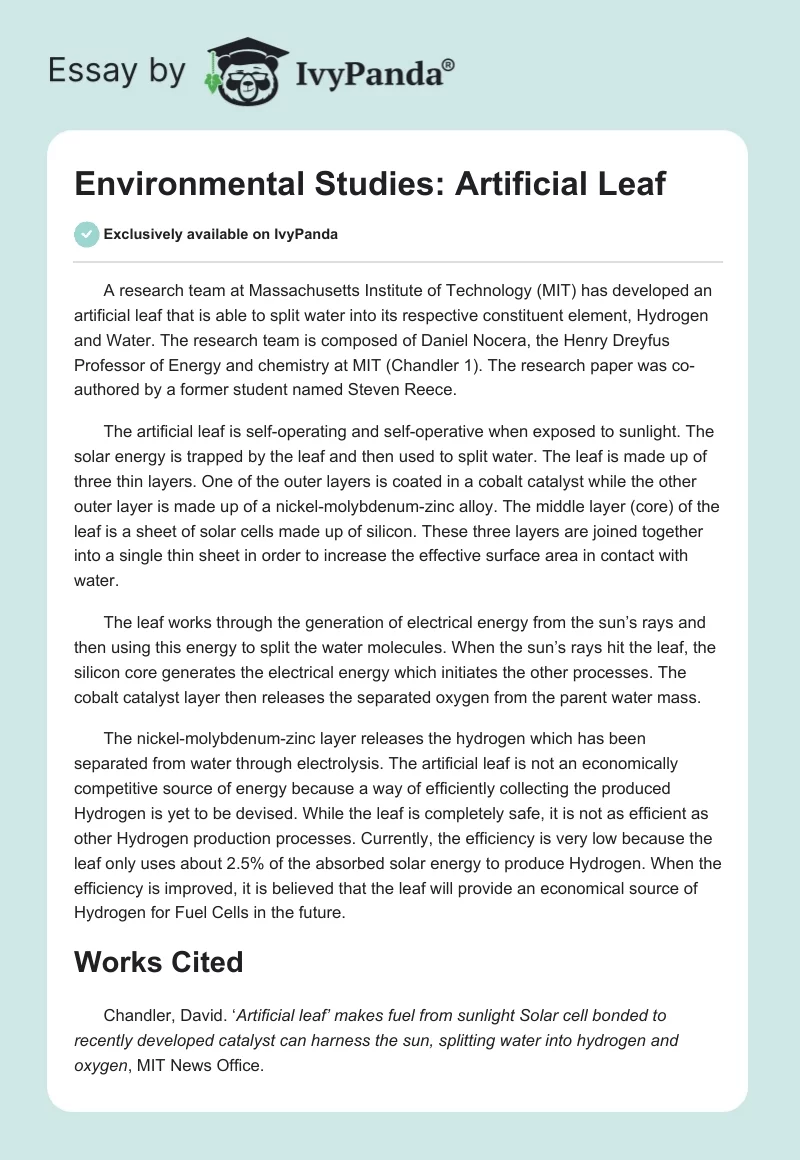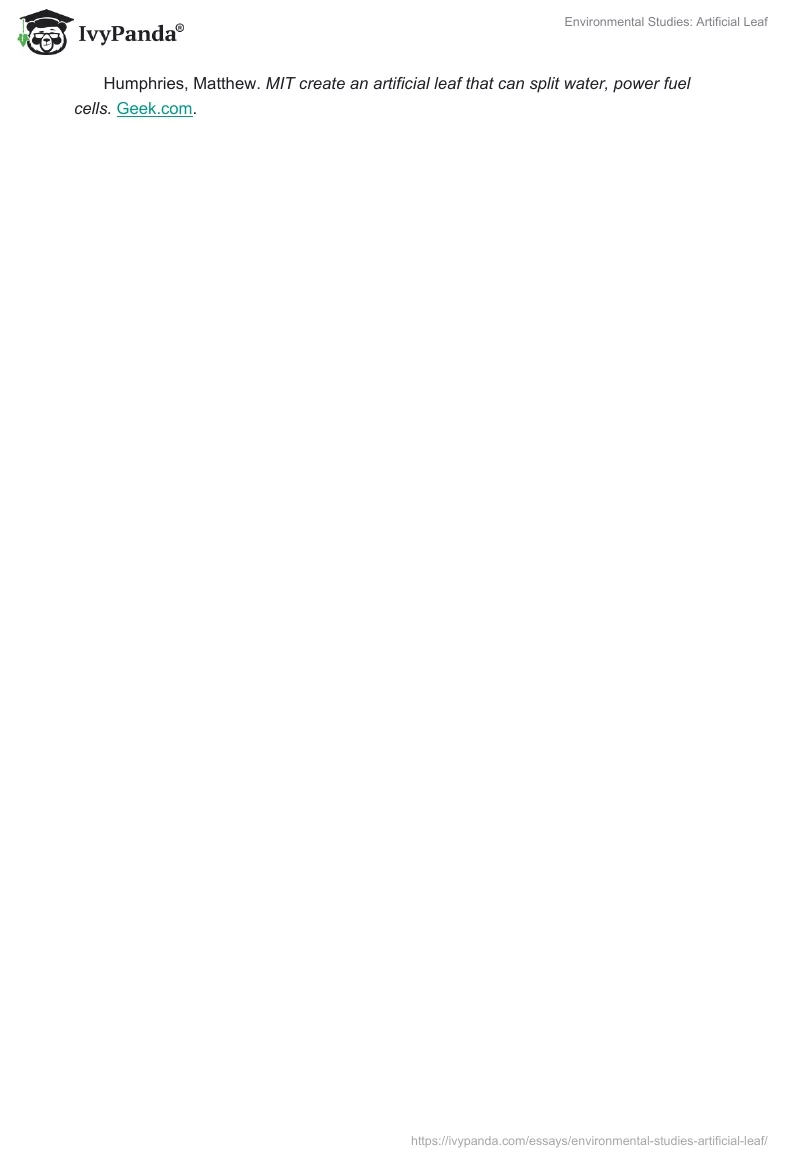A research team at Massachusetts Institute of Technology (MIT) has developed an artificial leaf that is able to split water into its respective constituent element, Hydrogen and Water. The research team is composed of Daniel Nocera, the Henry Dreyfus Professor of Energy and chemistry at MIT (Chandler 1). The research paper was co-authored by a former student named Steven Reece.
The artificial leaf is self-operating and self-operative when exposed to sunlight. The solar energy is trapped by the leaf and then used to split water. The leaf is made up of three thin layers. One of the outer layers is coated in a cobalt catalyst while the other outer layer is made up of a nickel-molybdenum-zinc alloy. The middle layer (core) of the leaf is a sheet of solar cells made up of silicon. These three layers are joined together into a single thin sheet in order to increase the effective surface area in contact with water.
The leaf works through the generation of electrical energy from the sun’s rays and then using this energy to split the water molecules. When the sun’s rays hit the leaf, the silicon core generates the electrical energy which initiates the other processes. The cobalt catalyst layer then releases the separated oxygen from the parent water mass.
The nickel-molybdenum-zinc layer releases the hydrogen which has been separated from water through electrolysis. The artificial leaf is not an economically competitive source of energy because a way of efficiently collecting the produced Hydrogen is yet to be devised. While the leaf is completely safe, it is not as efficient as other Hydrogen production processes. Currently, the efficiency is very low because the leaf only uses about 2.5% of the absorbed solar energy to produce Hydrogen. When the efficiency is improved, it is believed that the leaf will provide an economical source of Hydrogen for Fuel Cells in the future.
Works Cited
Chandler, David. ‘Artificial leaf’ makes fuel from sunlight Solar cell bonded to recently developed catalyst can harness the sun, splitting water into hydrogen and oxygen, MIT News Office.
Humphries, Matthew. MIT create an artificial leaf that can split water, power fuel cells. Geek.com. Web.


